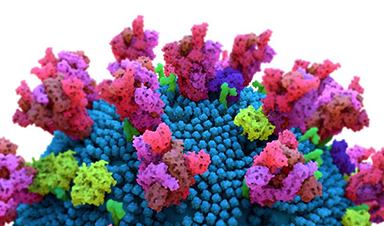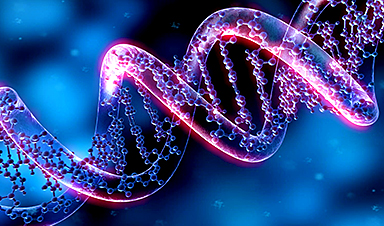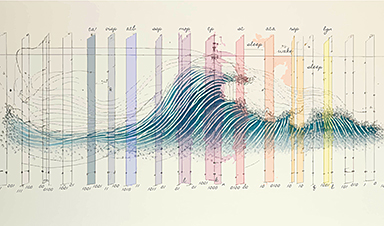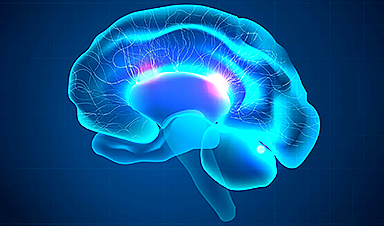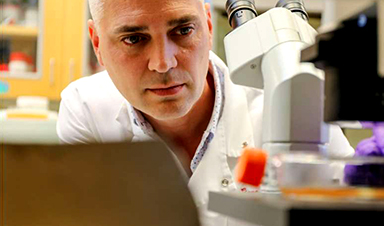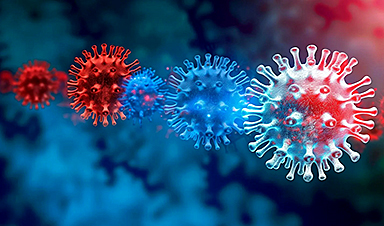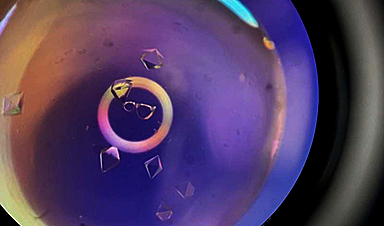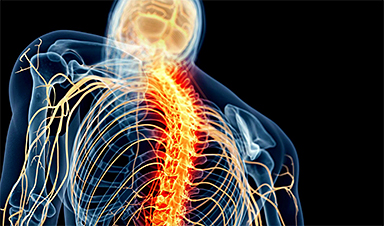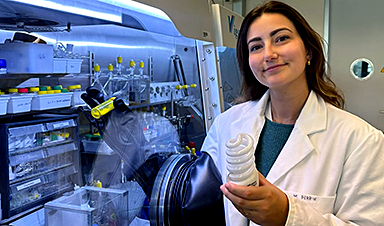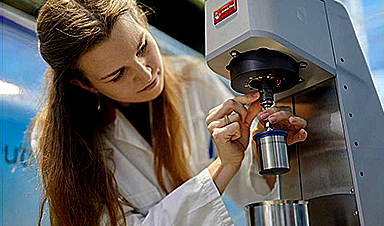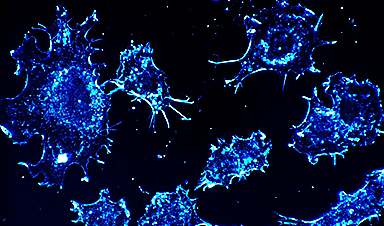A team of researchers recently published a paper in the journal ACS Applied Nano Materials that demonstrated the effectiveness of specific chemically-modified nanohole edges in reduced graphene oxide (rGO) in binding proteins.
Graphene-Based Biosensors
Biosensors are gaining considerable prominence owing to the rising significance of quantitative or qualitative detection of biological markers and early prognosis of diseases. Such a shift is necessitating the development of accessible, accurate, and rapid techniques.
Biosensors based on graphene, where graphene is used as a transducer or buffer, have attracted wide attention due to the exceptional properties of graphene, such as effect-free high permittivity and high carrier mobility.
Graphene combined with nanoparticles has been investigated as a biosensor in previous research; however, during the development of such biosensors, certain properties of graphene can potentially affect the detection limit of the sensor. Thus, the surface specificity of graphene must be modified for certain molecules to use in biosensors.
Modifying Graphene Nanohole Edges
In this study, researchers initially synthesized rGO nanomembrane (NMG), with nanoholes in the scale of 40-60 nm center-to-center distances and 20-25 nm in diameter, following two distinct approaches that are based on gold nano-islands (Au-NIs) and gold nanoparticles (AuNPs). Later, they performed a specific covalent chemical modification of the nanohole edges in the NMG and evaluated their effectiveness in capturing biological molecules.
rGO-AuNPs were fabricated by depositing an rGO monolayer over a self-assembled AuNP monolayer and then removing the NPs. rGO-Au-NIs were also formed in a similar manner excluding the self-assembled AuNP monolayer, which was replaced by an Au-NI layer.
Ultraviolet (UV) spectroscopy, infrared spectroscopy, and scanning electron microscope (SEM) were used to characterize the deposited layers after and before removing the NIs or the NPs.
The chemical groups in the layers were defined and investigated by Fourier transform infrared (FTIR) spectroscopy.
3-(aminopropyl) triethoxysilane (APTES) was utilized to modify the holes’ edges, while N-ethyl-N′-(3-(dimethylamino) propyl) carbodiimide/N-hydroxysuccinimide) (EDC/NHS) was applied as coupling agents to facilitate coupling between the NMG nanohole edges and a biological moiety such as an antibody.
The successful modification of the NMG edges and the scope of monitoring protein binding were investigated by attaching the angiotensin-converting enzyme 2 (ACE2) antibody to the edges, and subsequently measuring the binding ability of the edges to severe acute respiratory syndrome coronavirus 2 (SARS-CoV-2) spike protein.
A number of control experiments were performed to verify the successful specific binding between the antibody/bioreceptor/ACE2 protein and the target molecule/SARS-CoV-2 spike protein.
Achieving Successful Protein Binding
NMG was successfully synthesized on the rGO layer using AuNPs and Au-NIs. The rGO films appeared as separated wrinkled flakes owing to the deformation after exfoliation and restacking processes, indicating the formation of a high-quality rGO-layered structure nanosheet.
The flakes appeared as a uniformed background after the rGO monolayer was deposited on the glass slide, and demonstrated a 97.7% transparency at a wavelength of 550 nm.
The FTIR spectrum of the GO layer displayed characteristic peaks of hydroxyl, carboxyl, aromatic, carboxy, epoxy group, whereas the FTIR spectrum of the chemically reduced GO or rGO lacked the peaks of oxygen groups that include epoxy and hydroxyl groups. Additionally, the intensities of characteristic peaks of oxygen were reduced in rGO, indicating a high degree of reduction of the GO sheet.
The aromatic groups represented the only remaining peaks at 1585 and 1623 cm-1 in the rGO.
NIs were distributed homogenously with a diameter of 25-35 nm after annealing. A high concentration of hydroxyl groups was observed at the nanohole edges in the NMG after its formation. The absorption peaks associated with nitrogen-hydrogen (N−H) bending and carbon-hydrogen (C−H) swing were observed at 1582 and 1380 cm-1 after the NMG was silanized with APTES, indicating the functionalization of NMG with APTES.
After the functionalization, the amine group was observed in the NMG with a separate peak at 1414 cm-1, which corresponded to the oxygen-hydrogen (O−H) bending vibration of the carboxyl group.
An amide bond was observed at 1533 cm-1 after the application of coupling agents at NMG edges, and more bands at 3280 and 1641 cm-1 emerged after the covalent bond interactions with the ACE2.
The amide bond was created between the carboxyl groups on the antibody and APTES-modified NMG edges owing to the presence of the amine groups at the edges. The intensity of the 1641 cm-1 peak after antibody interaction was higher compared to the peak observed in the NH2-NMG, indicating the successful antibody surface functionalization on NH2-NMG.
The FTIR spectra of NMG and rGO were measured by modifying and activating both of them with APTES and EDC/NHS. No change in peak positions was observed in rGO. However, the intensity of the amide bond increased substantially in NMG, indicating the specificity of protein binding only to hole edges and not to the surface.
Real-time binding measurements demonstrated an affinity constant of 0.93 × 109 M-1 and a dissociation constant (KD) of 1.08 nM.
Taken together, the findings of this study demonstrated a versatile and robust mechanism to perform specific modifications of NMG edges to use NMG as a real-time highly sensitive biosensor.
News
The Silent Battle Within: How Your Organs Choose Between Mom and Dad’s Genes
Research reveals that selective expression of maternal or paternal X chromosomes varies by organ, driven by cellular competition. A new study published today (July 26) in Nature Genetics by the Lymphoid Development Group at the MRC [...]
Study identifies genes increasing risk of severe COVID-19
Whether or not a person becomes seriously ill with COVID-19 depends, among other things, on genetic factors. With this in mind, researchers from the University Hospital Bonn (UKB) and the University of Bonn, in [...]
Small regions of the brain can take micro-naps while the rest of the brain is awake and vice versa
Sleep and wake: They're totally distinct states of being that define the boundaries of our daily lives. For years, scientists have measured the difference between these instinctual brain processes by observing brain waves, with [...]
Redefining Consciousness: Small Regions of the Brain Can Take Micro-Naps While the Rest of the Brain Is Awake
The study broadly reveals how fast brain waves, previously overlooked, establish fundamental patterns of sleep and wakefulness. Scientists have developed a new method to analyze sleep and wake states by detecting ultra-fast neuronal activity [...]
AI Reveals Health Secrets Through Facial Temperature Mapping
Researchers have found that different facial temperatures correlate with chronic illnesses like diabetes and high blood pressure, and these can be detected using AI with thermal cameras. They highlight the potential of this technology [...]
Breakthrough in aging research: Blocking IL-11 extends lifespan and improves health in mice
In a recent study published in the journal Nature, a team of researchers used murine models and various pharmacological and genetic approaches to examine whether pro-inflammatory signaling involving interleukin (IL)-11, which activates signaling molecules such [...]
Promise for a universal influenza vaccine: Scientists validate theory using 1918 flu virus
New research led by Oregon Health & Science University reveals a promising approach to developing a universal influenza vaccine—a so-called "one and done" vaccine that confers lifetime immunity against an evolving virus. The study, [...]
New Projects Aim To Pioneer the Future of Neuroscience
One study will investigate the alterations in brain activity at the cellular level caused by psilocybin, the psychoactive substance found in “magic mushrooms.” How do neurons respond to the effects of magic mushrooms? What [...]
Decoding the Decline: Scientific Insights Into Long COVID’s Retreat
Research indicates a significant reduction in long COVID risk, largely due to vaccination and the virus’s evolution. The study analyzes data from over 441,000 veterans, showing lower rates of long COVID among vaccinated individuals compared [...]
Silicon Transformed: A Breakthrough in Laser Nanofabrication
A new method enables precise nanofabrication inside silicon using spatial light modulation and laser pulses, creating advanced nanostructures for potential use in electronics and photonics. Silicon, the cornerstone of modern electronics, photovoltaics, and photonics, [...]
Caught in the actinium: New research could help design better cancer treatments
The element actinium was first discovered at the turn of the 20th century, but even now, nearly 125 years later, researchers still don't have a good grasp on the metal's chemistry. That's because actinium [...]
Innovative Light-Controlled Drugs Could Revolutionize Neuropathic Pain Treatment
A team of researchers from the Institute for Bioengineering of Catalonia (IBEC) has developed light-activated derivatives of the anti-epileptic drug carbamazepine to treat neuropathic pain. Light can be harnessed to target drugs to specific [...]
Green Gold: Turning E-Waste Into a Treasure Trove of Rare Earth Metals
Scientists are developing a process inspired by nature that efficiently recovers europium from old fluorescent lamps. The approach could lead to the long-awaited recycling of rare earth metals. A small molecule that naturally serves [...]
Cambridge Study: AI Chatbots Have an “Empathy Gap,” and It Could Be Dangerous
A new study suggests a framework for “Child Safe AI” in response to recent incidents showing that many children perceive chatbots as quasi-human and reliable. A study has indicated that AI chatbots often exhibit [...]
Nanoparticle-based delivery system could offer treatment for diabetics with rare insulin allergy
Up to 3% of people with diabetes have an allergic reaction to insulin. A team at Forschungszentrum Jülich has now studied a method that could be used to deliver the active substance into the [...]
Nanorobot kills cancer cells in mice with hidden weapon
Researchers at Karolinska Institutet in Sweden have developed nanorobots that kill cancer cells in mice. The robot's weapon is hidden in a nanostructure and is exposed only in the tumor microenvironment, sparing healthy cells. [...]
